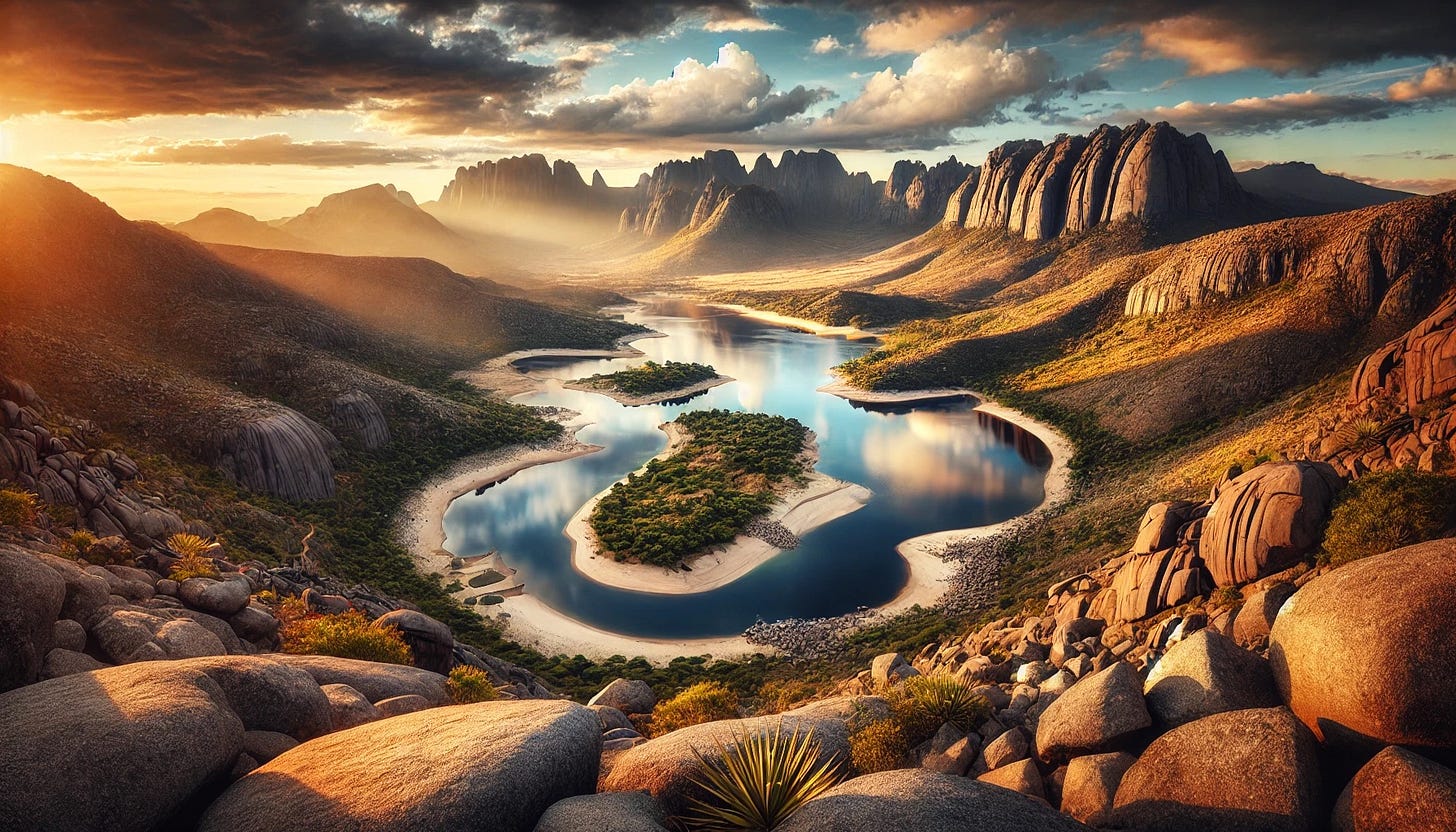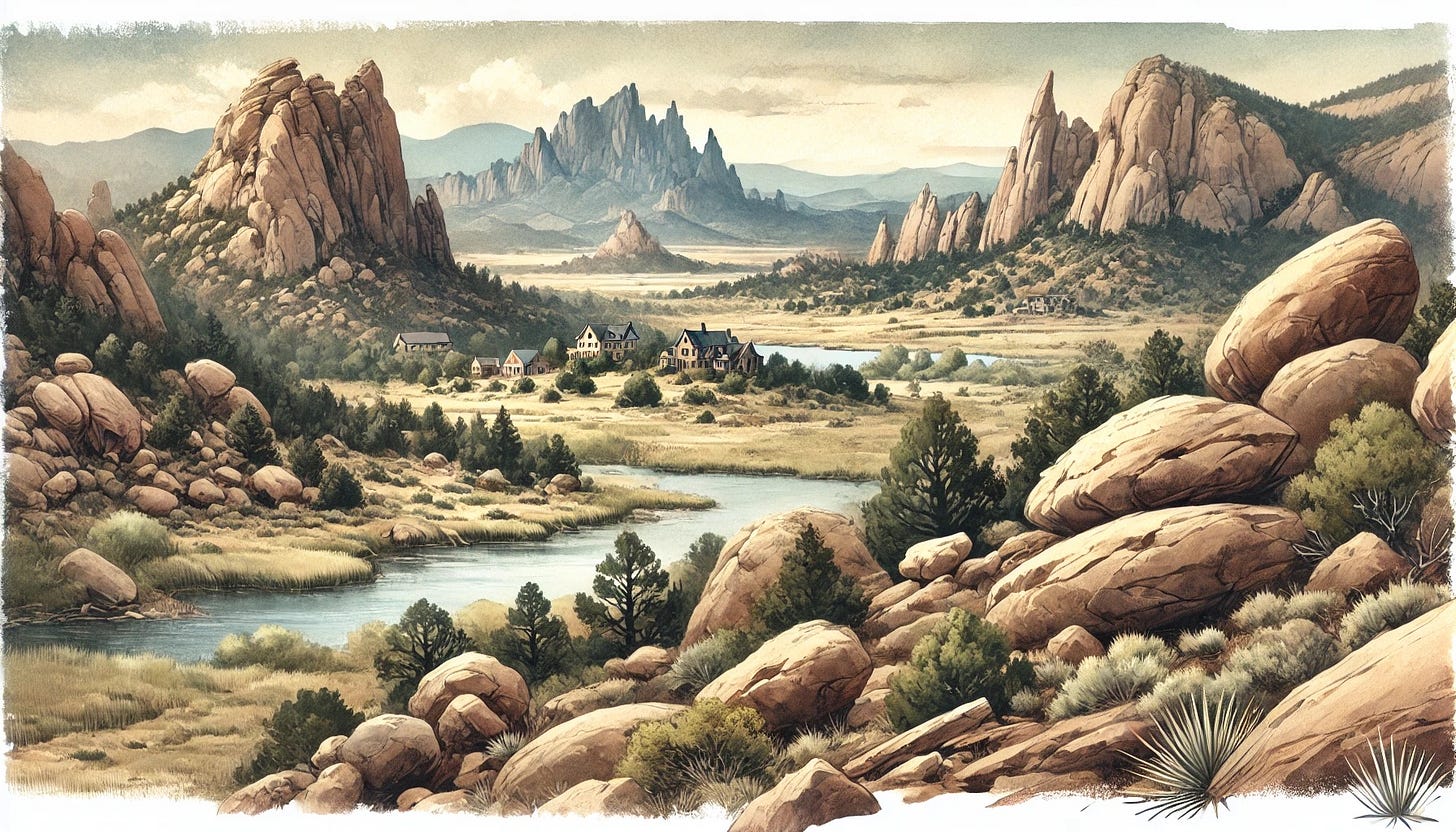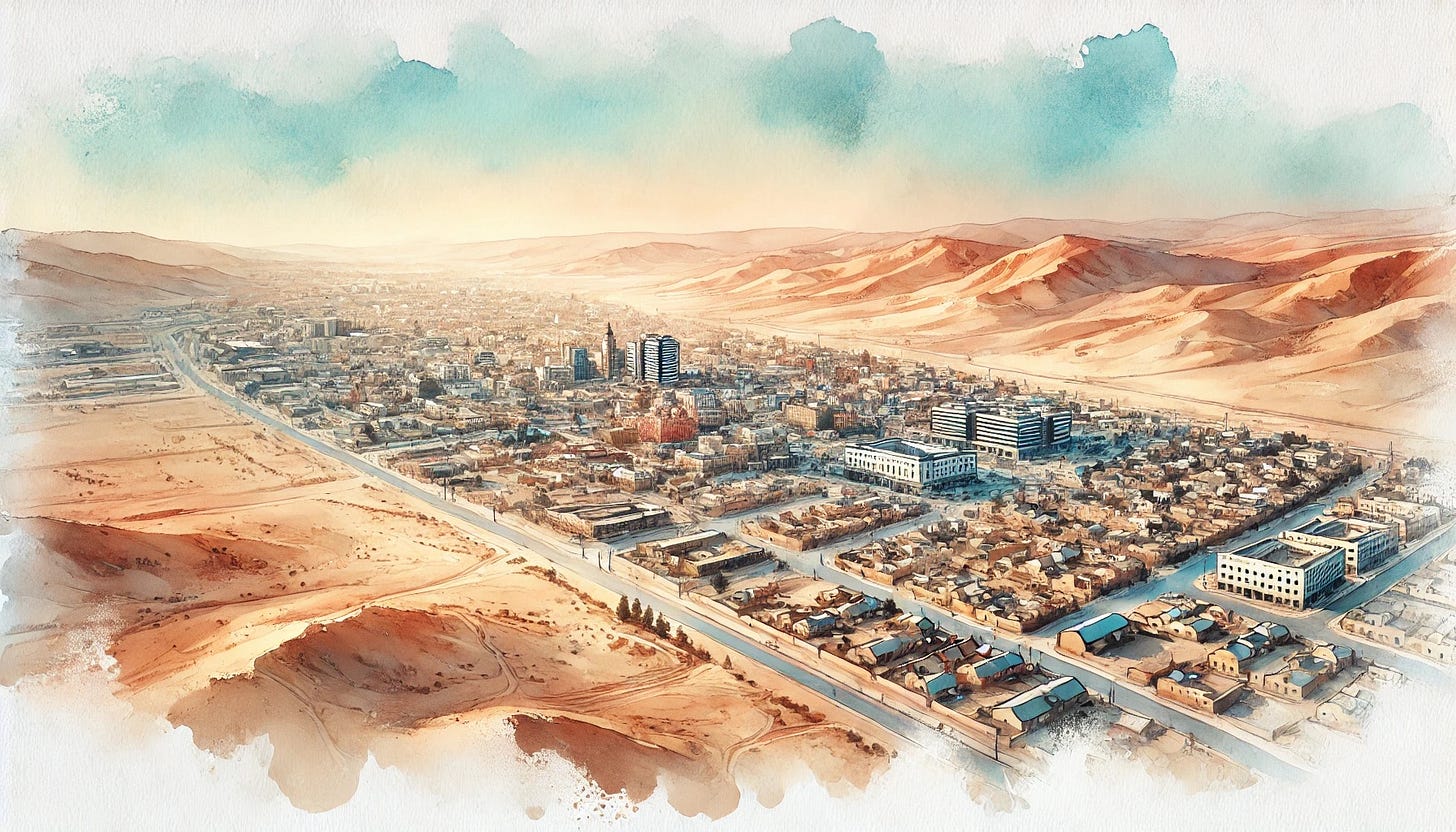The Land Beneath the Peaks
The World - Riley’s Perspective on Echo Canyon’s History and Heritage
Dear Reader,
Authors writing in current times don’t typically include a description of their book’s “world.” At least, that’s what I’ve seen.
When I wrote “Riley’s Garden Oasis,” it was written from the Sonoran Desert point of view. The book is creative nonfiction, and the reader learns about desert container gardening through Riley's experiences as a newbie.
➡️ If you’ve read “Riley’s Garden Oasis” or plan to, don’t get confused by timelines. When I wrote that, writing a fictional series was nowhere in my plan or, as they say, on my radar.
Those of us living in the desert or other hot and dry climates understand but yet get frustrated with our challenging climate.
These extreme, climate challenges made me pause to consider the characters and what they would need to face in these new novels. As I got further into writing the first book of the Women of the Canyon series, I decided I didn’t want them to have to deal with such harsh conditions—especially the relentless heat. So, I created a near-future world in this small slice of desert lands.
I’m letting Riley tell you the story of how this unimaginable utopia was formed. She is my inspiration and catalyst for these stories, and I know you will enjoy hearing her view of the Women of the Canyon’s world.
Marylee
ps. The Era
These stories take place in the second half of the 21st century, say 2060-2100. A lot will happen in our technological world in these future decades. I don’t profess to know what it will be like, but it gets my imagination flowing.
The Land of Women of the Canyon
Told by Riley McGovern
When I first moved to Wáshani Valley, I thought I’d just landed in some desert outpost with a few more trees. But, as my neighbor Ben slowly taught me (and he does love to teach), I realized this place has layers. I knew it was in the desert, but since we were close to a river, I didn’t think twice about the abundance of trees and shrubbery. I took it all in and simply accepted it as it was. After I settled into my new home, I explored the valley and desert, which was so different from our more inviting Echo Canyon.
However, it was strange as I met other people from surrounding areas. They would ask where I live, and when I told them, I saw mixed reactions. Some seemed jealous, and others seemed to celebrate my good fortune in living in this temperate and beautiful climate in the middle of the desert.
I can relate to that when I think about my friend Quinn, who lives on the Big Island of Hawaii. While I’m happy for her, I often have wistful feelings wondering what it would be like to live that lifestyle in the tropics.
So, this special place, Echo Canyon, sits here in Wáshani Valley, tucked between the towering Tókahni Peaks and the softer Senhára Ridge—two mountain ranges that keep us sheltered from the desert heat and the rest of the world.
Now, the monsoons here are like nothing I’d ever seen. Ben tells me they’ve been shaping this land for centuries, hammering down from the mountains with a force that carved the canyons. They didn’t just shape the rock; they carved an even deeper valley, giving birth to the Shánarah River—what Ben calls the “flow of life.”
That river winds through the valley, carrying rainwater that’s worn the ground down over centuries, bringing soil and boulders along with it. There’s a small tributary behind my garden.
Eventually, all that water pooled into what the Sabákari named Lake Wákari. They call it the “mirror of the sky” because, on calm days, it’s still as glass. I remember standing there my first time, trying to wrap my head around how something so quiet could have such a presence.
And then there’s Lake Ináshi. It formed later, from Wákari’s overflow, and has this gentle, whispering quality. It’s like you can feel the land breathing there, which I know sounds strange, but once you stand by Ináshi, you get it.
Living here, you start to understand how all those low-lying lakes and rivers have built a world of their own. We don’t have the desert’s wild temperature swings. Instead, Wáshani keeps a steady, subtropical rhythm, like its own oasis in the middle of the drylands. The hills are scattered with boulders, giving it a rugged feel, and that mix of rock and water draws in all sorts of birds and wildlife you’d never find in the open desert.
Ben tells me the Sabákari were the first ones here, long before we settled in Echo Canyon. They built their villages above the river, just high enough to avoid floods, with adobe homes and open community spaces that honored the rhythm of the land. I imagine this valley must have felt like a gift to them—a place where nature offered everything they needed. And Ben, well, he seems to think I’ll understand that someday, too.
I’m intrigued by the adobe homes and how they blend with the canyon walls. I’d like to design a modern house with the same effect.
The Sabákari are people with roots that go as deep as the “sabáka” trees they revere. Ben told me their name comes from those trees, which they believe have spiritual and healing powers.
The Sabákari are matrilineal, with women holding the weight of leadership and the role of healers, passing down stories that kept their history and values alive. There’s something powerful in knowing that the women always anchored the strength and wisdom of the community. I’d like to learn more about them and their women leaders. Maybe there’s something in their story that will help me discover where I fit in this world.
I’d heard bits and pieces of the story when the Europeans first came to the valley, but hearing it from Ben added a whole new layer. In the mid-1600s, Spanish missionaries and settlers eventually found their way to Wáshani Valley, following the river like a guide. It wasn’t some friendly handshake—the Spaniards wanted control of the land and thought they could bring the Sabákari to Christianity. I imagine just how tense things must have been.
The Sabakari weren’t about to give up what had been theirs for centuries. This valley isn’t vast, but every bit of it holds a special meaning, and they held their ground. After a time, the Spanish realized they’d get farther by working with the Sabakari instead of pushing them out. And gradually, something interesting happened—there was integration. They kept their core beliefs but blended some customs with the newcomers, creating a culture with deep roots and a unique mix. You see it in the architecture, how food is grown and prepared, even in the practical ways they manage the land.
When you come here from the city, you leave behind the flat desert roadways of Sabáka and start winding through narrow roads that twist up into the valley. Sometimes, there are switchbacks where you look down, and all you see is a cliff falling away below you. Then, as you round the last bend, Echo Canyon comes into view—this small community tucked away, home to about 500 residents. It’s a mix of long-time Sabákari families, those with Spanish heritage, some who’ve blended both, and a few newer faces that somehow fit right in. Like mine, I hope.
The people here respect the land and the monsoon rains that bring it to life. Living in this secluded valley, they manage a balance of old traditions with a bit of modern sustainability. They use the rain to irrigate and the desert sun to power their homes. It’s a close-knit community living simply, content to let the outside world chase after the “new ways.” Here, they take only what they need, careful not to waste.
In Wáshani Valley, with the sacred peaks, flowing waters, and whispering winds, you feel how nature and tradition have shaped this place, keeping a rhythm that offers both sustenance and a sense of timelessness. It’s a way of life that’s rare to find and even harder to leave behind.
I know something more is happening on the other side of the valley. I’ve seen articles published online by the World University for Sustainability. We don’t talk about it, and I’m concerned it will spill over to Echo Canyon and destroy the timeless way of life for those who call it home.
I hope you’ve enjoyed my telling the story of the world in our Women of the Canyon series. If you have any questions or ideas, please let us know. We’ve never created a world before and I bet there are things we’ve left out.






I think it's interesting that you include such details about the world in which your characters live, and you wrote this from one character's perspective. I am definitely more likely to reveal the world to my readers a little at a time, chapter by chapter, and maybe that's because it's how it comes to me when I write. Love seeing inside another writer's process! I enjoyed learning about the world from Riley's perspective.
Marylee,
I really enjoy your writing. You have a conversational approach to the reader that is easy to be drawn in by. Your off to a fantastic start! Keep going. I look forward to more. :)